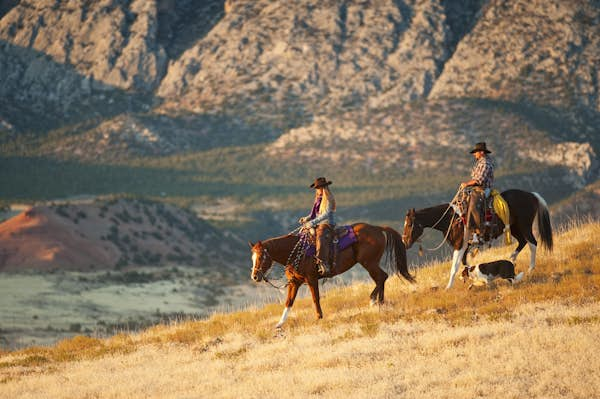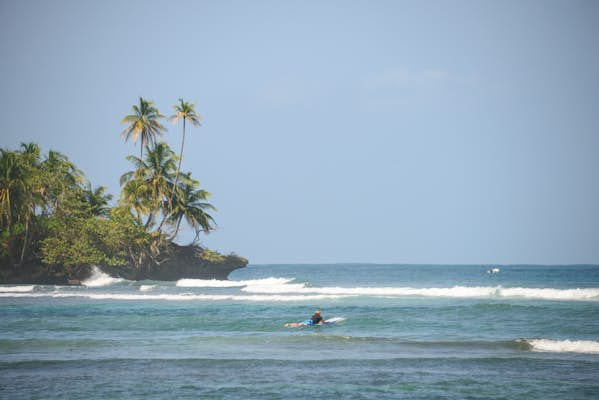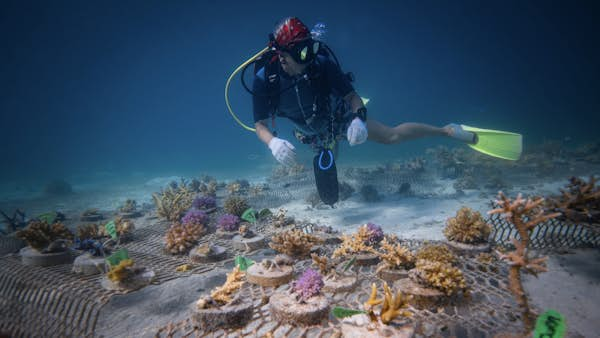


Lonely Plan-it: How to plan a dude ranch vacation
The first dude ranch was established in the South Dakota Badlands during the late 1800s. The concept was such a hit that these ranches began popping up across the West, allowing wealthy city folk to recreate frontier life for themselves and partake in simple pleasures like horseback riding, fishing and fresh air.
Today people visit dude ranches for the same reasons they did in the past: gorgeous scenery, outdoor activities and all-inclusive experiences. Basically, this is your chance to live like a character out of Taylor Sheridan’s Yellowstone with a private chef, a stable of horses and your very own ranch. If that weren’t enough, some dude ranches even have amenities like full-service spas and private ski slopes.
We’ll have to wait until November of 2024 for the final episodes of the Yellowstone series, but in the meantime, dude ranches are here to satisfy your hankering for a taste of the West. It’s time to saddle up – whether you’re planning a family vacation, a group trip or a romantic getaway, this is what you need to know about dude ranches.
What is a dude ranch and why is it called that?
In the late 1800s, “dude” was a nickname for the city slickers who flocked to ranches to play cowboy, and the name stuck. Today, the terms “dude ranch” or “guest ranch” are used interchangeably to describe all-inclusive western-themed vacation properties, often found on working cattle ranches. This doesn’t mean you have to get your hands dirty, though. Modern dude ranches spoil you with so many activities you can have an amazing time without even riding a horse.

What state is best for me?
There are dude ranches throughout the West waiting to host your western-themed getaway. The best state for your trip depends largely on your preferred weather and scenery.
Arizona
Arizona dude ranches are saturated with cactus and gorgeous desert landscapes. If you want to escape the cold, this is the place to come for sunny skies and winter temperatures in the high 60s and low 70s. In the summer, be prepared for hot, dry weather, with temperatures frequently exceeding 100° F.
If you’re thinking Arizona might be right for your trip, check out Tucson’s White Stallion Ranch. Guest rooms at this family-owned dude ranch feature western chic decor and private patios with views of the mountains, cactus gardens and horse corrals. Amenities include a pool, a full-service spa, sports courts, a theater, a game room, and activities like horseback riding, e-biking, shooting and rock climbing.
Montana
Montana is a playground of lush green meadows, dense forests, rivers and rugged mountain ranges. In summer, temperatures usually range from the mid-70s to mid-80s. Winters are cold and snowy, with average temperatures from the high teens to the 30s.
Montana dude ranches include The Resort at Paws Up in Greenough. Perhaps most famous for its luxury glamping tents, guests can also choose cabins or vacation homes. The green-o, the adults-only section of the resort, also offers treehouses and glass homes in the forest. Activities include horseback riding, a mountain bike course, ATV riding, art classes, sports clay shooting, fly fishing and a full-service spa. This is a great destination for foodies, with options like Chuckwagon dinners, multiple restaurants, or a dazzling 8-course meal every night for guests at the green-o.

Wyoming
Buttes, mountain ranges and prairies make for jaw-dropping scenery at Wyoming dude ranches. In most of the state, summer temperatures are in the low 80s and mid 90s. In winter, expect snow and average temperatures of 5-18°F.
Brush Creek Ranch in Saratoga, Wyoming, offers a seasonal adults-only spa resort, a seasonal wingshooting and fishing lodge, and a year-round lodge and spa on their 30,000-acre property. In addition to shooting and fishing, activities include horseback riding, ATV tours, cattle drives, rock climbing, cooking classes, a spa and wellness experiences. The legendary culinary program here features a curated collection of restaurants, an onsite distillery and one of the world’s largest wine collections.
Colorado
Rugged mountain topography, alpine lakes and meadows of seasonal wildflowers woo visitors to Colorado dude ranches. In summer, temperatures are usually in the 70s and 80s, with cooler temperatures in higher elevations. In winter, average temperatures fluctuate from the low 20s to the mid-40s. High elevations see a great deal of snow.
Dude ranches in Colorado include C Lazy U Ranch, where guests choose between traditional lodge-style rooms or private cabins. Activities include horseback riding, fly fishing, a family-friendly summer rodeo, ziplining, trap shooting and a spa. Meals are inspired by the changing seasons and the flavors of the West; homemade bread, local cheese and favorites like lamb and aged beef pair perfectly with fine wine and craft cocktails.
What time of year is best for a dude ranch vacation?
Dude ranch rates function like hotel rates – they usually spike when bookings are in high demand. You’ll get the best prices in the off-season. Better rates may also be available on weekdays, as opposed to weekends, and dates when kids are in school.
Aside from price, the seasons affect the activities at dude ranches. If your heart is set on outdoor cookouts and river floats, you should probably avoid visiting Montana or Wyoming in winter. On the other hand, snow opens up new possibilities. The Resort at Paws Up offers winter activities like tubing, dog sledding or ice skating, and Brush Creek Ranch boasts a private ski mountain.
How far out do I need to book?
It’s a good idea to make your reservations six months in advance. Most dude ranches offer multiple accommodation options and booking early will help ensure your top pick is available. There may also be limited space for specific activities. That said, you might be able to snag a last-minute reservation so don’t be afraid to check.

What kinds of activities can I experience at dude ranches?
Although no two dude ranches are the same, you can usually expect a few core experiences. Horseback riding is always on offer, and it’s common to find activities like fly fishing, cattle herding, hiking, biking, kayaking and live music. At some dude ranches, you’ll even find full-service spas and wellness classes like yoga or sound bathing.
What is the food like?
Arrive hungry because dining is a key part of a dude ranch vacation. At smaller operations, meals are usually served family style. Often this translates to outdoor cookouts with delicious-yet-casual grub like burgers, cornbread and baked beans. Larger dude ranches tend to have multiple dining options, including fine-dining establishments focused on elevated ranch cuisine incorporating venison, bison, trout and locally grown produce.
Are dude ranches all-inclusive?
Most dude ranches are all-inclusive or offer packages including lodging, meals and basic activities. Some activities like spa treatments or river rafting might require an extra charge. Call or check the website before booking your trip to ensure you know exactly what to budget for and expect when you arrive.
Are dude ranches family-friendly?
A wide range of activities and unique settings make dude ranches ideal for a family vacation. Many dude ranches even offer kids clubs and supervised activities to give adults a little alone time to sneak away for a spa treatment or cocktail.
What is the etiquette I need to know at a dude ranch?
Dude ranch etiquette starts before you leave home. Most dude ranches provide a packing list to prepare you for your activities. If you show up for a trail ride in flip-flops, you’ll probably be turned away (or sent to the gift shop to purchase appropriate footwear). Follow the packing list to set yourself up for success.
It’s also important to check the tipping policy before you head to the dude ranch. The Resort at Paws Up is gratuity free and Brush Creek Lodge includes tips in the resort fee. Other dude ranches, like C Lazy U Ranch or White Stallion Ranch, provide folios at checkout for discretionary tips. If gratuities aren’t included, 15 to 20 percent of your package is appreciated. You can also tip wranglers and guides directly.
Timeliness is an important part of dude ranch etiquette. Arriving late to a group activity can disrupt the experience for other guests and create extra work for the guides. Even if you book a private experience, timeliness is essential since another party might be scheduled after your time slot.
The biggest rule at a dude ranch is simply to enjoy yourself. Trust us, it won’t be hard.

8 of the best places to surf in Central America
Central America is one of the most wave-blessed parts of the globe.
Swells roll in from the Pacific and the Caribbean Sea throughout the region, offering up everything from barrels to beefy beach breaks all months of the year. Costa Rica is justly known for its hedonistic surf-party towns fringed by coconut-strewn sands, while Panama has archipelagos of reef-ringed tropical islands and tube waves that work in the wet season.
El Salvador, meanwhile, beckons with powerful A-frames right by hippie beer shacks. And those are just the best-known spots.
Our guide to the best surfing spots in Central America has all you need to find the top spots to catch waves for all levels, from beginner to pro.
1. Bocas del Toro, Panama
Best for barreling waves on brochure-worthy beaches
There are so many overwater bungalows in Panama‘s Bocas del Toro these days that it can sometimes feel like the Maldives in the Caribbean. But it’s all that takes place on and under the water – boating, scuba diving and surfing – that makes this string of six populated islands, 50 coral cays and over 200 mini-islets so special.
The variety of breaks accessible within a short boat ride of Bocas town is truly impressive (A boat will really be the only way to get around).
Beginners can go 20 minutes to Wizard Beach to find glassy, 5ft swells with hardly a lineup. Experts can go 15 minutes to Bluff Beach for sucky tubes with the power to snap boards. The long Isla Bastimentos, meanwhile, is the intermediate surfer’s haven.
The downside of surfing in Bocas del Toro is the relatively short season. December to early April is the sweet spot, when consistent northerly offshore winds and SW swells combine. The rest of the year, this is a coconut-sipping, snorkel-blowing paradise with water as unrippled as a Panamanian hojaldre flatbread.
Getting to Bocas del Toro: Air Panama has direct flights from Panama City (Albrook Airport) into Bocas del Toro. There are also bus-boat connections from Panama City.

2. Tamarindo, Costa Rica
Best for a combo of surfing and partying
Surf, eat, party, repeat: such is the routine in Tamarindo. The rise of this town has been nothing short of phenomenal ever since Bruce Brown and company passed through while filming Endless Summer II back in the early ’90s. Today, everyone wants a piece of the action – and it’s not hard to see why.
Tamarindo is anchored on Playa Tamarindo, a long arc of alabaster sand with peaks for all levels – think beginner whitewash meets lefts and rights perfect for intermediates to start ripping on.
Better surfers usually head over to Playa Grande for the faster, hollower, right-hand break that forms on the Estero estuary. Just be careful of crocs in the water should you join in.
High or incoming tides tend to work best because a few of the named breaks rely on submerged rock reefs to work. Get up early to surf here if you can, as morning crowds in Tamarindo are thinned out by hangovers acquired in throbbing bars like Sharky’s and Crazy Monkey the night before.
Getting to Tamarindo: A transfer or public bus from Liberia Airport takes no more than 2 hours. From San José Airport, a bus takes about 5 hours.

3. Popoyo, Nicaragua
Best for experienced surfers
Playa Popoyo in Nicaragua’s southwest is only 0.8km (0.5-mile) long, but it manages to pack in more waves than you can shake a plate of gallo pinto (rice and beans) at. It’s earned its reputation as one of Central America’s harder surf destinations because it handles good size and offers a mix of point breaks and reefs that each pose their own challenges.
The star is Popoyo Main Break, a nigh-on perfect A-frame that gives fast but fun rights and lefts on pretty much any tide. That’s nowhere near as heavy as the Outer Reef, which pounds triple overhead slabs for a lineup of proper Evel Knievels. Goofy riders, meanwhile, should be sure to check out Stoney’s, a lefty point that recalls Bali’s iconic Uluwatu.
A good way to tick off the lot is to go for a surf package with NicaWaves Surf Camp. It’s just a five-minute walk from Main Break, but trips include up to three surf boat expeditions a pop.
Getting to Popoyo: Private transfers from Managua take just over 2 hours. You can also get the public bus, though keep in mind it stops just outside of Popoyo itself, so you’ll need to walk the last couple of kilometers.
4. El Tunco, El Salvador
Best for surf and sunsets
El Tunco is the best place in El Salvador to get the salt in your hair and ride some waves. More than just a surf town, El Tunco is also a party-friendly hippie haven, complete with resident crowd of Willie Nelson lookalikes and surf-mad locals.
There are four fantastic breaks packed into a 3-km-stretch (2-miles) of coastline, with options for all levels of surfers.
Just starting? There are oodles of outfitters that will offer lessons at either El Sunzalito or nearby Playa San Blas, both of which have sandy bottoms and crumbly waves.
The western end of the beach has the El Sunzal point break, a right-hander tailored to improving intermediates. Then you get La Bocana, a fast and challenging left with hollow sections.
Monkey Lala is the place to gather at the golden hour. From there, you can watch the sun dip behind the crags of El Tunco’s famous rock stack (which is supposedly shaped like a pig) and watch the local crews ripping up La Bocana.
Getting to El Tunco: Direct buses from San Salvador to El Tunco take about an hour.

5. Santa Teresa, Costa Rica
Best for ultra-consistent waves
It seems like everybody and their dog (or at least their partner) is in Santa Teresa right now. A once-sleepy stretch of potholed road and fishing shacks at the end of the wonderful Nicoya Peninsula, it’s been transformed into one of the most stylish places to wax down the board in the land of Pura Vida – and Central America.
Don’t be too deterred by all the dressier visitors, though: Santa Teresa still has yoga camps clustered in along its hillsides, the vibes on the waves are nice and relaxed, and howler monkeys remain the morning alarm clock.
What’s more, the new interest has generated some pretty nifty surf camps and cafes – even Lapoint of Ericeira fame has set up shop, with a stylish surf hotel centered around a swimming pool.
Wave-wise, Playa Santa Teresa is a seemingly endless run of cocoa-tinged sand that’s beach peak after beach peak. The scene is at its biggest in summer on SW swells, but has a year-round consistency that would make Roger Federer blush.
To the north, Playa Hermosa offers mushier waves for learning on. Or go south to Mal País for some more hard-core reef breaks and points.
Getting to Santa Teresa: Direct public buses run from San José at least twice daily, taking 6 or 7 hours. Those in a hurry can catch a propeller plane to Tambor and make the 35-minute transfer from there.
6. Puerto Viejo de Talamanca, Costa Rica
Best place to go when the Pacific is flat
Puerto Viejo de Talamanca on the Caribbean Sea comes into season when the waves die down on the Costa Rican Pacific. From December to March, powerful tropical storm systems sitting off the Colombian coast send regular southeast swells into the bays north and south of town.
The most famous spot of the lot here is surely Salsa Brava. It’s hailed as the Tico answer to Hawaii’s Pipeline, and offers heavy, hollow barrels onto shallow reefs bristling with urchins.
Something a little easier is on offer at Playa Cocles, which is where you’ll find the local surf schools plying their trade between the stooping coconut palms.
It’s ritual to retire to Tasty Waves Cantina on Playa Cocles once you’re done with a session. This wonderfully ramshackle reggae and dub bar serves up cold Imperial beers, pub grub and late-night parties.
Getting to Puerto Viejo de Talamanca: Autotransportes Mepe runs buses from San José about five times a day. There are also direct buses from Limón.

7. Nosara, Costa Rica
Best waves for beginners
After years of living in the shadow of Tamarindo, Nosara is finally hitting the big time. Regulars will lament the fact that the secret is out – yet there’s no way that such a prime surf destination could remain under the radar in Costa Rica, especially with its epic offering for total beginners.
Playa Guiones is the jewel in the crown. A soft curve of a bay that angles ever so slightly due southwest into the Pacific, it’s a swell magnet with a kaleidoscope of breaks that form on the ever-shifting sandbanks.
Low tide can get crunchy and big, but the rising water turns on the goods for learners, bringing glassy green waves out back and plenty of whitewash.
The town? Think Tamarindo 20 years back. Big names like Selina are now in the mix, but you can also find jungle-shrouded B&Bs inhabited by howler monkeys a short walk from the waves of Guiones. The Sunset Shack and Ride On Beach House are especially well rated.
Getting to Nosara: Direct buses from San José take up to 5 hours, while buses from Liberia take about 3 hours. Transfers should be done in a 4WD as some of the roads into Nosara remain unpaved.
8. Playa Maderas, Nicaragua
Best A-frame for lots of levels
There are plenty of awesome surf bays running north and south from San Juan del Sur (SJDS) in southern Nica, but Playa Maderas, home to one of the most fantastic A-frames in the whole region, really stands out. A dream for intermediates and up, it’s rideable left and right, and sometimes even hollows out to give mini barrels.
Early risers and low-tide surfers will be rewarded with emptier lineups in a region that can get crowded with both day-tripping surf schools out of SJDS and the local crews.
Alternatively, you can do puppy eyes for a local guide to see if they’ll reveal the secret spots between the town and Playa Yankee, toward the Costa Rica border.
It’s tempting to stay in San Juan del Sur and travel up to Maderas whenever you want to surf. But that would mean missing out on some of the fantastic camps, like Buena Vista Surf Club and its yoga deck perched above the coastal jungles.
Getting to Playa Maderas: First, aim for San Juan del Sur by taking the direct bus from Managua via Rivas. Then head onward to Playa Maderas by taxi or – even more fun – water taxi.

These 10 sustainable travel experiences are both exciting and rewarding
Sustainable travel is more than just a buzzword.
Planning trips designed to minimize environmental impacts while empowering local communities makes any vacation more deeply rewarding, creating lasting memories while doing good for Planet Earth.
With this simple yet all-too-often overlooked principle in mind, here are 10 adventures all over the world that anyone passionate about sustainability can get behind.

1. Learn all about sustainable living practices in Costa Rica
Costa Rica is famous for its eco-resorts, and few are more low-impact than Rancho Margot. The perfect base for exploring the hiking trails, bubbling hot springs and scenic lake of nearby Parque Nacional Volcán Arenal, this lush, off-grid retreat doubles as a sustainable learning center. Guests can opt for a tour of its self-sufficient practices (from organic agriculture to green-energy production) or sign up for a week-long immersion program to learn about sustainability initiatives you can integrate into your life at home. Twice-daily yoga classes and farm-to-table meals from the ranch’s own garden are also included in all types of stays. If you’re prepared to make a four-week commitment, volunteering here is also an option.

2. Take a low-impact whale-watching tour in New Zealand
The Māori-owned and -operated Whale Watch Kaikoura supports the Indigenous Ngai Tahu community, located in Kaikoura on New Zealand’s South Island. Its boats operate all year round, and sightings can include (depending on the season) gentle aquatic giants such as sperm whales, humpbacks, blue whales and orcas. Boats keep a respectful distance from these celebrity creatures, and the onboard commentary focuses on conservation efforts and cultural information. Kaikoura is roughly midway between Picton and Christchurch; take the local bus service along State Hwy 1 for about 2 hours.
3. Kick back at an Amazon Basin eco-lodge in Bolivia
Hidden deep in Amazonian Bolivia, a cluster of cabins occupies a lush area that is home to a whopping 11% of the world’s species of flora and fauna. Chalalán Ecolodge is entirely managed by the Quechua-Tacano Indigenous community, and a share of the enterprise’s profits goes to fund community health and education facilities. The compound is encircled by 14 well-marked nature trails, and the majority of guests choose to spend their mornings on jaunts through the jungle before spending the rest of the day swinging in the lodge’s hammocks. The best time to visit is during the dry months, from May to October. From Rurrenabaque, head 30km (19 miles) west to Madidi National Park.

4. Support Europe’s brown bears in Romania
Home to Europe’s largest population of brown bears, Romania is a fitting location for the continent’s largest preserve for the animals. Libearty Bear Sanctuary near the town of Zărnesţi in Transylvania provides a safe, humane environment for bears rescued from cruel captive conditions – and offers the next best thing to viewing the impressive predators in their natural habitat. Guides take visitors through the 69-hectare (170-acre) oak forest that more than 100 bears now call home. For those keen to spend more time with the bears, UK-based Responsible Travel offers a seven-day volunteer program at the sanctuary.

5. Settle in with locals in Bhutan
The Himalayan kingdom of Bhutan famously measures its success in terms of Gross National Happiness, an ethos that helps maintain a remarkable commitment to traditional culture and environmental sustainability. Accordingly, it takes some work (and resources) to visit this remote country. A tour with a government-approved operator is a prerequisite and will likely include visits to historic temples and hikes through yak meadows high in the Himalayas. Connect more deeply with local culture by enlisting an operator that can arrange a homestay experience – such as the Bhutan Homestay program, through which income generated by tourism helps to offset the losses to crops and livestock caused by park wildlife.

6. Shadow Africa’s first peoples in Namibia
Visitors to northeastern Namibia’s Tsumkwe Country Lodge get to tag along with the San people (the original inhabitants of southern Africa, once known as Bushmen) and observe and partake in their daily activities. San have survived in the Kalahari Desert for at least 40,000 years – which means city slickers can surely learn a thing or two from them about living in the wilderness. A morning’s outing may include sampling the “fruits” of the desert (berries and tubers) or witnessing a finely honed hunt for antelope. Book directly with the lodge, or visit as part of a longer tour with a responsible operator like Expert Africa in the UK, which works closely with the community and can advise on suitable itineraries for individual travelers.

7. Take an in-depth walk with the land’s traditional owners in Tasmania, Australia
Known for its fire-colored, lichen-tinged granite headlands, white-sand beaches and idyllic turquoise waters, northeastern Tasmania’s Bay of Fires is one of Australia’s most unforgettable landscapes. Thanks to the launch of the Wukalina Walk, you can have the 10,000-odd years of Aboriginal history and culture in the region narrated to you by a Palawa (Tasmanian Aboriginal) guide.
This exciting experience represents the first time Palawa people have had the chance to tell their story on their own land. The three-day, four-night exploration of the Larapuna (Bay of Fires) and Wukalina (Mt William) areas will deepen your understanding of Palawa culture and community history. Immersing you in the natural and rugged beauty of the breathtaking coastal region, the 34km (21-mile) walk includes two nights of lodging in comfortable bespoke domed huts and one night in the keeper’s cottage at Eddystone Point Lighthouse.

8. Camp in a rhino sanctuary in Kenya
Stretching from Mt Kenya to the rim of the Great Rift Valley, Kenyan-owned Ol Pejeta Conservancy is East Africa’s largest sanctuary for black rhinos. With camping available, it’s also one of the best budget options for a safari stay in the region. By choosing to bed down here (or even just visit for the day), visitors help to fund one of Africa’s most successful community-led conservation initiatives. With activities ranging from classic game drives to eco-friendly experiences, including walking and horseback safaris, there are plenty of opportunities to tick off the Big Five while learning about Ol Pejeta’s conservation work.

9. Master coral planting in Fiji
Is there a better way to experience Fiji’s dazzling coral reefs than to actively help protect them? A growing number of the Pacific island nation’s resorts have now introduced coral gardening as a guest activity. Also known as coral aquaculture, this activity involves cultivating young corals in a protected nursery until adulthood. They are then transferred – or “planted” – back into the natural environment, often on artificial reefs. Resorts where you can try your hand at this sustainable underwater activity include Castaway Island Fiji; Jean-Michel Cousteau Resort on Vanua Levu, Fiji’s second-largest island; and Makaira Resort on the island of Taveuni.

10. Volunteer for the National Parks Service in the USA
Fall asleep to a chorus of wolf calls and count bears as your neighbors at one of the USA’s dozens of national parks. Volunteering positions range from guiding tours to conducting scientific research, each providing immersive opportunities to gain a unique perspective on nature. Volunteers work a minimum of 32 hours; remuneration for expenses is dependent on the local organization for which you are volunteering.

Beginner Makeup For Men: Shop These 4 Essentials
Beauty
11 Makeup Artists of Color to Follow This Year
From renowned Mother of Makeup Pat McGrath to the man behind Beyoncé’s glam, Sir John, L’OFFICIEL shares 11 makeup artists of color inspiring the beauty community.
01.23.2021 by Alice Cavallo and Mina Dragani

